Guatemala Army - Order of Battle
On March 22, 1945, Decree No. 80 of the Congress of the Republic was published, with the creation of the Military Zones, dividing the national territory into seven Military Zones. For reasons of tactical and strategic order, the Republic was reorganized territorially, on October 31, 1979, the Seat of the Sixth Military Zone is moved from Santa Cruz El Quiché to the departmental head of Huehuetenango with the same name. Military Zones operated until May 31, 1986, as the Ministry of National Defense considered and justified strategic reasons, in order to achieve the best performance of the missions assigned to each command and to fulfill the mandate Constitutional of the Republic of Guatemala, maintain the independence, sovereignty, honor of the nation, the integrity of its territory, Peace and internal and external security. It was therefore appropriate to reorganize the territorial jurisdiction of Military Zones.
In the early 1980s the principal combat units consisted of 27 infantry battalions, two paratroop battalions, one engineer battalion, 12 artillery mortar bat- teries, and the Presidential Guard Battalion. A battalion was smaller in size and had less firepower than its United States counterpart. Teh combat forces were supported by the usual service units, such as medical, military police, and ordnance.
For territorial control the army in March 1983 divided the country into 22 military zones, each generally comprising one of the 22 administrative departments (less the department of Peten). Zone commanders were presidential appointees, selected from the senior officers of the combat branches. The 22 zones plus Peten (which was designated as a brigade), were the major territorial commands of the army, controlling reserve affairs as well as the regular armed forces. The commanders also functioned as governmental administrators in their respective areas. In effect, the political chain of command goes from the central government through the military zone commanders to the departmental governors.
The unit deactivations under the 1996 peace accords included four military zones, the Mobile Military Police, twenty-two infantry battalions, and one company of the National Palace Guard. The Army downsizing redesigned the operational structure of 19 military zones and three strategic brigades via the elimination of several military zones and the absorption of others' areas of operations. By order of the High Command, published in General Order of the Army for Officers No. 12-97 dated 01 OCT 1997, in compliance with the peace agreements signed on 29D1996, as well as the studies performed according to the needs of the service, dated 30SEP1997, was Deactivated Military Zone No. 8 of the department of Chiquimula, becoming a jurisdictional part of Military Zone No. 705, Zacapa.
On July 1, 2004, the Military Commands were organized in Brigades. The reduction in the overall number of soldiers from about 27,000 to about 15,000 had not had a significant effect. The change of Army structure from geographic commands to functional commands has, however, led to the closure of numerous military bases and a subsequent decline in GOG presence in isolated sections of the country, particularly along the northern border with Mexico in the San Marcos region and throughout the Peten. Sadly, there is no evidence that the former military presence in these areas ever deterred drug trafficking. In fact, removing the military presence from areas used by drug traffickers has probably had the effect of reducing both traffickers, payrolls and military corruption.
Guatemala increased its army, to about 25,000 troops, in a process that began in January 2012 when President Otto Fernando Pérez Molina took power. It began with the establishment of several military detachments and brigades: Military Detachment (DM) AMBUR, Alta Verapaz; DM Villa Nueva Guatemala; DM San Juan Cotzal, Quiche; DM Mixco, Guatemala; DM San Marcos; DM Villa Nueva, Guatemala; DM La Antigua Guatemala, Sacatepéquez; DM Ciudad Vieja, Sacatepéquez; Task Force Maya, Zone-18, Guatemala City; Military Police Brigade, San Juan Sacatepéquez; And the Jungle Operations Brigade, Peten.
Shortly thereafter, four additional brigades were created, including those of Marine Corps, to defend the steps of the sea towards the coasts, and the one of Mountain Operations, to guard the passage between Mexico and San Marcos, and was formed Task Force Tecun Uman. By March 2014, in addition to the brigades, 10 Task Forces had been completed, including the Maya (with operations in the Lemon, Alameda I, Alameda II, Alameda III and Alameda IV, El Paraíso and San Rafael, Located in the north periphery of the capital); The Kaminal, with a total of 500 police and military personnel, to protect areas 7 and 12 in the south of the city, inspect vehicles and make pending catches; The El Milagro, in the municipality of Mixco, in the west of the capital, with 700 PNC agents and soldiers who patrol in the area and maintain 16 checkpoints in eight colonies in this sector.
| |
|
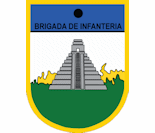 The First Infantry Brigade "General Luis García León" ["GLGL"] is the largest military command of the Republic. The main function is to maintain the sovereignty of the country. The First Infantry Brigade "GLGL", will conduct defensive operations to order and comprehensive cooperation; From "D" day to "H" hours, in the areas of interest in the responsibility sector, with the purpose of guaranteeing the areas of Collective, National, Public, Citizen, external and internal Security and contributing to the maintenance of the Defense of national sovereignty, the preservation of the Maya Biosphere Reserve, in order to contribute to the achievement of the institutional objectives of the Guatemalan Army.
Since the jurisdictional area of this brigade is bounded by the northern part, the country of Mexico and the west to the territory administered by Belize. But we also contribute to safety within the nine municipalities that make up the area of responsibility. As part of inter-agency activities, the First Infantry Brigade "General Luis García León" supports governmental and non-governmental entities involved in the conservation of natural, cultural, security, environment, disaster prevention and control, humanitarian aid, as well as the sustainable development of the department of Petén. Activities are carried out involving the entire population including justice, educational, religious, human rights, municipalities, parents, but mainly to children. In accordance with item 20 of the General Army Order for Officers No. 09-2004, dated July 31, 2004, the High Command ordered the cancellation of the name of the Second Military Region "General Luis" García León, for the First Infantry Brigade "General Luis García León", due to the Modernization and Restructuring Plan.
The First Infantry Brigade "General Luis García León" ["GLGL"] is the largest military command of the Republic. The main function is to maintain the sovereignty of the country. The First Infantry Brigade "GLGL", will conduct defensive operations to order and comprehensive cooperation; From "D" day to "H" hours, in the areas of interest in the responsibility sector, with the purpose of guaranteeing the areas of Collective, National, Public, Citizen, external and internal Security and contributing to the maintenance of the Defense of national sovereignty, the preservation of the Maya Biosphere Reserve, in order to contribute to the achievement of the institutional objectives of the Guatemalan Army.
Since the jurisdictional area of this brigade is bounded by the northern part, the country of Mexico and the west to the territory administered by Belize. But we also contribute to safety within the nine municipalities that make up the area of responsibility. As part of inter-agency activities, the First Infantry Brigade "General Luis García León" supports governmental and non-governmental entities involved in the conservation of natural, cultural, security, environment, disaster prevention and control, humanitarian aid, as well as the sustainable development of the department of Petén. Activities are carried out involving the entire population including justice, educational, religious, human rights, municipalities, parents, but mainly to children. In accordance with item 20 of the General Army Order for Officers No. 09-2004, dated July 31, 2004, the High Command ordered the cancellation of the name of the Second Military Region "General Luis" García León, for the First Infantry Brigade "General Luis García León", due to the Modernization and Restructuring Plan.
|
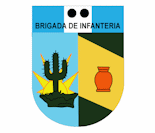 The Second Infantry Brigade "Captain General Rafael Carrera" sectors of responsibility are the Departments of Zacapa, El Progreso, Chiquimula, and Izabal; Likewise, of thirty-five Municipalities and maintain a close relationship with governmental and non-governmental authorities. The Second Infantry Brigade, "Captain General Rafael Carrera", Zacapa, will conduct military and non-war operations from day "D" at time "H" in support of the constitutional mission of the Guatemalan Army, based on Articles 244 And 249, developing an efficient defense, institutional cooperation, administration, professionalization and projection in its area of responsibility, and at the order of the National Defense Staff in any part of the Republic. The history of this Brigade has a legendary aspect, its origins go back to the garrison of plaza that existed until 30 June 1945, in the place that occupied formerly the Institute Adolfo Venancio Hall of the East, in front of the central park of this city. The name was given in memory of General Jose Rafael Carrera Turcios, strategist victor of the battle of San José de La Arada, carried out February 2, 1951, stopping the advance of the army Unionist of Honduras and El Salvador.
The Second Infantry Brigade "Captain General Rafael Carrera" sectors of responsibility are the Departments of Zacapa, El Progreso, Chiquimula, and Izabal; Likewise, of thirty-five Municipalities and maintain a close relationship with governmental and non-governmental authorities. The Second Infantry Brigade, "Captain General Rafael Carrera", Zacapa, will conduct military and non-war operations from day "D" at time "H" in support of the constitutional mission of the Guatemalan Army, based on Articles 244 And 249, developing an efficient defense, institutional cooperation, administration, professionalization and projection in its area of responsibility, and at the order of the National Defense Staff in any part of the Republic. The history of this Brigade has a legendary aspect, its origins go back to the garrison of plaza that existed until 30 June 1945, in the place that occupied formerly the Institute Adolfo Venancio Hall of the East, in front of the central park of this city. The name was given in memory of General Jose Rafael Carrera Turcios, strategist victor of the battle of San José de La Arada, carried out February 2, 1951, stopping the advance of the army Unionist of Honduras and El Salvador.
|
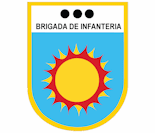 Third Brigade of Infantry "General Manuel Aguilar Santamaría" has under its operational jurisdiction three (3) Departments of the east of the country (Jutiapa , Jalapa and Santa Rosa), two hundred three (203) kilometers of border with El Salvador and fifty-four (54) kilometers on the coast of the Pacific Ocean. The Third Infantry Brigade will conduct security operations and control of the border line, military and non-war operations, from the "D" day to the "H" hour, to create the conditions that allow development, guarantee the welfare Of inhabitants and the preservation of existing resources in the area of operational responsibility and to be in a position to support other Infantry Brigades to order, all to help maintain the independence, sovereignty and honor of Guatemala, the integrity of the Territory, peace and internal and external security. The Third Infantry Brigade with its Infantry Battalion participated in the combat to the subversion from its beginning in all the areas of the country, managing to maintain the fight until the signing of the agreements of Peace that were realized 29 December 1996. In 1906, General Aguilar Santa María was appointed General-in-Chief of the Guatemalan Army. General Aguilar Santa Maria wrote a detailed report of the military mistakes made, so he was placed under house arrest and humiliated constantly by the ruler; The situation became unbearable for this nobleman, who according to the official report was deprived of life in his house of room, where he was discovered on March 19, 1908. Third Brigade of Infantry "General Manuel Aguilar Santamaría" has under its operational jurisdiction three (3) Departments of the east of the country (Jutiapa , Jalapa and Santa Rosa), two hundred three (203) kilometers of border with El Salvador and fifty-four (54) kilometers on the coast of the Pacific Ocean. The Third Infantry Brigade will conduct security operations and control of the border line, military and non-war operations, from the "D" day to the "H" hour, to create the conditions that allow development, guarantee the welfare Of inhabitants and the preservation of existing resources in the area of operational responsibility and to be in a position to support other Infantry Brigades to order, all to help maintain the independence, sovereignty and honor of Guatemala, the integrity of the Territory, peace and internal and external security. The Third Infantry Brigade with its Infantry Battalion participated in the combat to the subversion from its beginning in all the areas of the country, managing to maintain the fight until the signing of the agreements of Peace that were realized 29 December 1996. In 1906, General Aguilar Santa María was appointed General-in-Chief of the Guatemalan Army. General Aguilar Santa Maria wrote a detailed report of the military mistakes made, so he was placed under house arrest and humiliated constantly by the ruler; The situation became unbearable for this nobleman, who according to the official report was deprived of life in his house of room, where he was discovered on March 19, 1908.
|
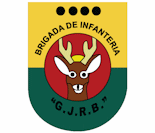 The Fourth Infantry Brigade "General Justo Rufino Barrios" is located in the municipality of Cuyotenango, in the department of Suchitepéquez, the home of Xancatales soldiers. The Fourth Infantry Brigade will carry out military and non-war operations to help create security conditions that facilitate the development and progress of the region in order to maintain independence, sovereignty and territorial integrity, peace and the honor of Guatemala. Its organic units, which were initially created in 1986 are: Command and Staff Company, Service Support Company, the First Infantry Battalion composed of the 1st, 2nd. And 3rd. Company of Fusiliers and a Company of Heavy Weapons. In the same year was organized the Battery of Obuses cal. 105mm. And in the year of 1987, 01 Support Squad of Services for the First Infantry Battalion and Civil Affairs Company. Having been created, the Second Infantry Battalion (-) composed of the 1st, 2nd. Company of Fusiliers and a Company of Heavy Weapons, coming from the former Military Zone No. 18, San Marcos.
The Fourth Infantry Brigade "General Justo Rufino Barrios" is located in the municipality of Cuyotenango, in the department of Suchitepéquez, the home of Xancatales soldiers. The Fourth Infantry Brigade will carry out military and non-war operations to help create security conditions that facilitate the development and progress of the region in order to maintain independence, sovereignty and territorial integrity, peace and the honor of Guatemala. Its organic units, which were initially created in 1986 are: Command and Staff Company, Service Support Company, the First Infantry Battalion composed of the 1st, 2nd. And 3rd. Company of Fusiliers and a Company of Heavy Weapons. In the same year was organized the Battery of Obuses cal. 105mm. And in the year of 1987, 01 Support Squad of Services for the First Infantry Battalion and Civil Affairs Company. Having been created, the Second Infantry Battalion (-) composed of the 1st, 2nd. Company of Fusiliers and a Company of Heavy Weapons, coming from the former Military Zone No. 18, San Marcos.
|
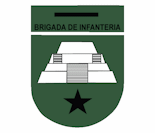 The the Fifth Infantry Brigade "Mariscal Gregorio Solares" is based in the department of Huehuetenango. The Fifth Infantry Brigade "MGS" made up of soldiers trained in the execution of military operations, humanitarian aid operations, search and rescue and operations of integral cooperation with other State institutions, privileging the observance of Human Rights and International human right. At the same time, training allows the development of operations in the areas of national security, citizen security and public safety, through tactical operations to safeguard the sovereignty and maintenance of security and peace for Guatemalan citizens. The Operational Responsibility Area assigned to the Fifth Infantry Brigade "MGS", Is a region of the national territory very important by virtue of its geographical location, which includes a border strip with the United Mexican States. It also houses the departments of Huehuetenango, Quiché, Sololá and Totonicapán. The Fifth Infantry Brigade is named after the distinguished Mariscal Gregorio Solares, Who stood out for his courage in the battle of the Plow in which he fought alongside General Rafael Carrera and for his meritorious intervention in it, receives the Medal of Honor to Merit and Special in Arms.
The the Fifth Infantry Brigade "Mariscal Gregorio Solares" is based in the department of Huehuetenango. The Fifth Infantry Brigade "MGS" made up of soldiers trained in the execution of military operations, humanitarian aid operations, search and rescue and operations of integral cooperation with other State institutions, privileging the observance of Human Rights and International human right. At the same time, training allows the development of operations in the areas of national security, citizen security and public safety, through tactical operations to safeguard the sovereignty and maintenance of security and peace for Guatemalan citizens. The Operational Responsibility Area assigned to the Fifth Infantry Brigade "MGS", Is a region of the national territory very important by virtue of its geographical location, which includes a border strip with the United Mexican States. It also houses the departments of Huehuetenango, Quiché, Sololá and Totonicapán. The Fifth Infantry Brigade is named after the distinguished Mariscal Gregorio Solares, Who stood out for his courage in the battle of the Plow in which he fought alongside General Rafael Carrera and for his meritorious intervention in it, receives the Medal of Honor to Merit and Special in Arms.
|
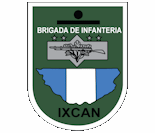 The Sixth Infantry Brigade "CAJDI" [Colonel "Antonio José de Irisarri], is located in the northwestern part of the Guatemalan territory, under the responsibility of the department of Alta Verapaz and the municipality of Ixcán, Quiché. The main mission of this infantry brigade is to conduct military and non-war operations, with the purpose of contributing to the maintenance of independence, sovereignty, territorial integrity, peace and internal and external security, with special participation in all four areas of security; A deployment fully compatible with collective and national security covering the seventy-two kilometers of border region with Mexico; The execution of operations at critical points and strategic value in the area of responsibility with an impact on public security and actions to protect people and their property with a clear coverage in citizen security; As well as others ordered by the National Defense Staff, in any part of the Republic. The Sixth Infantry Brigade "Coronel Antonio José de Irisarri", was founded according to Government Agreement No.301-2009 considering the purpose of strengthening peace and security.
The Sixth Infantry Brigade "CAJDI" [Colonel "Antonio José de Irisarri], is located in the northwestern part of the Guatemalan territory, under the responsibility of the department of Alta Verapaz and the municipality of Ixcán, Quiché. The main mission of this infantry brigade is to conduct military and non-war operations, with the purpose of contributing to the maintenance of independence, sovereignty, territorial integrity, peace and internal and external security, with special participation in all four areas of security; A deployment fully compatible with collective and national security covering the seventy-two kilometers of border region with Mexico; The execution of operations at critical points and strategic value in the area of responsibility with an impact on public security and actions to protect people and their property with a clear coverage in citizen security; As well as others ordered by the National Defense Staff, in any part of the Republic. The Sixth Infantry Brigade "Coronel Antonio José de Irisarri", was founded according to Government Agreement No.301-2009 considering the purpose of strengthening peace and security.
|
Special Commands |
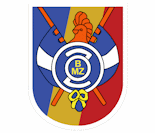 The 1st. Infantry Brigade "Mariscal Zavala" was created on May 25, 1846, at the time of the government of General Rafael Carrera, founder of the Republic of Guatemala. In its beginnings it was located in the hill of San José de Buena Vista, area that at the moment occupies the national theater "Miguel Angel Asturias" In the current Zone 4 of the capital city. The First Brigade of Infantry Mariscal Zavala, within the current context of the Guatemalan Army, fulfills strategic missions, not only because of its characteristics of special military organization, but also because of its geographical location in a natural environment. The limits of its military jurisdiction include the departments of Guatemala and Escuintla, which are under jurisdiction the municipalities of the central zone being Palencia, San Jose del Golfo, San Pedro Ayampuc and Chinautla. In the area of support with the Penitentiary System, In addition, it is periodically constituted as a point of concentration, both for the organization and training of the contingents prior to deployment, as well as when returning from their mission areas The 1st. Infantry Brigade "Mariscal Zavala" was created on May 25, 1846, at the time of the government of General Rafael Carrera, founder of the Republic of Guatemala. In its beginnings it was located in the hill of San José de Buena Vista, area that at the moment occupies the national theater "Miguel Angel Asturias" In the current Zone 4 of the capital city. The First Brigade of Infantry Mariscal Zavala, within the current context of the Guatemalan Army, fulfills strategic missions, not only because of its characteristics of special military organization, but also because of its geographical location in a natural environment. The limits of its military jurisdiction include the departments of Guatemala and Escuintla, which are under jurisdiction the municipalities of the central zone being Palencia, San Jose del Golfo, San Pedro Ayampuc and Chinautla. In the area of support with the Penitentiary System, In addition, it is periodically constituted as a point of concentration, both for the organization and training of the contingents prior to deployment, as well as when returning from their mission areas
|
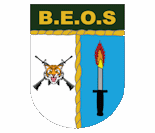 The Special Jungle Operations Brigade "Lt. Colonel Infantry DEM Víctor Augusto Quilo Ayuso" covers the vast territory of the Petén, has an extensive border area, natural resources, strategic and archaeological sites considered cultural heritage of humanity, requiring specific attention. For this reason, the President of the Republic decided to create a special unit by means of Government Agreement No. 63-2012, dated June 30, 2012. It conducts non-war operations, starting on 30JUN2012, in the western department of Peten, in order to control threats, land and river routes, achieve and maintain security conditions conducive to the full development of the citizen. It is a special brigade of forest operations, with immediate air response capacity, to defend sovereignty in the area of responsibility for threats, by interdicting illegal activities developed by common crime and organized crime, as well as helping to efficiently protect the Mayan biosphere west of Petén department. With differentiated capacities for the assistance to the population of the damages caused by natural or anthropogenic disasters. The special status of this area of the Petén department, "Cradle of the Maya Civilization", where important natural resources of a strategic nature are located, protected areas such as "Laguna del Tigre" National Park and "Sierra Lacandón". Carry out a strategic redeployment of personnel to contribute to its conservation. The Special Brigade of Operations of Forest, had its origins as Inter-institutional Force of the North, created the 06SEP2005, according to the Fragmentary Order No. 3 "H" -0014/2005, to the Plan of Operations against the Delinquency "Safe Guatemala" No With the mission of carrying out non-war operations in support of the National Civil Police and other State Institutions in order to neutralize the illicit activities that affect the department of the Peten, contributing to peace, security And development of the country. This Brigade has an area of responsibility that has a territorial extension of 20,167.82 kms ², that groups to the municipalities of San Andrés, San Francisco, La Libertad, Crosses and Sayaxché having its soothes in the village the Subín, of the municipality of the Freedom. The Special Jungle Operations Brigade "Lt. Colonel Infantry DEM Víctor Augusto Quilo Ayuso" covers the vast territory of the Petén, has an extensive border area, natural resources, strategic and archaeological sites considered cultural heritage of humanity, requiring specific attention. For this reason, the President of the Republic decided to create a special unit by means of Government Agreement No. 63-2012, dated June 30, 2012. It conducts non-war operations, starting on 30JUN2012, in the western department of Peten, in order to control threats, land and river routes, achieve and maintain security conditions conducive to the full development of the citizen. It is a special brigade of forest operations, with immediate air response capacity, to defend sovereignty in the area of responsibility for threats, by interdicting illegal activities developed by common crime and organized crime, as well as helping to efficiently protect the Mayan biosphere west of Petén department. With differentiated capacities for the assistance to the population of the damages caused by natural or anthropogenic disasters. The special status of this area of the Petén department, "Cradle of the Maya Civilization", where important natural resources of a strategic nature are located, protected areas such as "Laguna del Tigre" National Park and "Sierra Lacandón". Carry out a strategic redeployment of personnel to contribute to its conservation. The Special Brigade of Operations of Forest, had its origins as Inter-institutional Force of the North, created the 06SEP2005, according to the Fragmentary Order No. 3 "H" -0014/2005, to the Plan of Operations against the Delinquency "Safe Guatemala" No With the mission of carrying out non-war operations in support of the National Civil Police and other State Institutions in order to neutralize the illicit activities that affect the department of the Peten, contributing to peace, security And development of the country. This Brigade has an area of responsibility that has a territorial extension of 20,167.82 kms ², that groups to the municipalities of San Andrés, San Francisco, La Libertad, Crosses and Sayaxché having its soothes in the village the Subín, of the municipality of the Freedom.
|
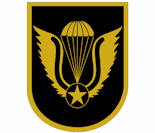 The Parachute Brigade "General Felipe Cruz" have in mind that the threats, risks and other concerns that face the security and defense of the nation are latent and therefore the constant training in parachute soldiers is efficient, To be ready to fulfill the missions entrusted by the Guatemalan Army, bearing in mind the respect for Human Rights and the faithful compliance with the rules, international treaties and laws in force in the country. In the area of action, the Parachute Brigade as a Strategic Unit of the Guatemalan Army, is not only limited to the national level, but also part of the international effort through a contingent of Special Forces under United Nations mandate in The Democratic Republic of the Congo on the African continent, this as a national contribution to contribute to the pacification efforts of the conflict areas in the world. The Parachute Brigade "General Felipe Cruz" have in mind that the threats, risks and other concerns that face the security and defense of the nation are latent and therefore the constant training in parachute soldiers is efficient, To be ready to fulfill the missions entrusted by the Guatemalan Army, bearing in mind the respect for Human Rights and the faithful compliance with the rules, international treaties and laws in force in the country. In the area of action, the Parachute Brigade as a Strategic Unit of the Guatemalan Army, is not only limited to the national level, but also part of the international effort through a contingent of Special Forces under United Nations mandate in The Democratic Republic of the Congo on the African continent, this as a national contribution to contribute to the pacification efforts of the conflict areas in the world.
|
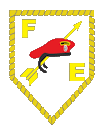 Special Forces Brigade [Brigada de Fuerzas Especiales "Kaibil"] mission is to carry out special operations aimed at the achievement of tactical objectives of strategic value for short periods; Participate in peace operations within the framework of the UN; And, to develop support operations for the State's civil security forces throughout the national territory; And to train special military units and contribute to the training of regular units. The story of the great Warrior Prince Kaibil Balam, in the tactical scenario of the war in the time of the conquest, inspires this unit and marking the way forward, for which we have the commitment to integrate the Elite Unit of the Glorious Army of Guatemala. The Guatemalan Army developed into the most effective counterinsurgency machine in the region. On September 20, 1974, the then Major of Infantry Pablo Nuila Hub, presented to the Chief of the Second Section of the General Staff of the Army Coronel de Infantería DEM. Ovidio Morales, a study in which proposed the creation of a course of "Commands". Special Operations were run by two groups of highly trained commandos; know as “KAIBILES.” There were also two Parachute Battalions, which were employed as light infantry. For urban warfare and rural policing, there was a semi-independent Mobile Military Police Corps, with two MPA battalions. The Air Force organized a Special Security Group for protection and immediate response, while the Navy deployed Naval Infantry Battalions known as “CAIMANES.” In accordance with the Plan for Modernization and Restructuring of the Army, The First and Second Kaibiles Fusiliers Company and the Special Forces Battalion formed by the First and Second Special Forces Companies, the Anti-Terrorist Unit currently forms the Special Interdiction and Rescue Group (GEIR) and the Company of Support and Services. The Brigade, in turn, houses the School of Training and Special Operations "Kaibil" and the Sniper School. Special Forces Brigade [Brigada de Fuerzas Especiales "Kaibil"] mission is to carry out special operations aimed at the achievement of tactical objectives of strategic value for short periods; Participate in peace operations within the framework of the UN; And, to develop support operations for the State's civil security forces throughout the national territory; And to train special military units and contribute to the training of regular units. The story of the great Warrior Prince Kaibil Balam, in the tactical scenario of the war in the time of the conquest, inspires this unit and marking the way forward, for which we have the commitment to integrate the Elite Unit of the Glorious Army of Guatemala. The Guatemalan Army developed into the most effective counterinsurgency machine in the region. On September 20, 1974, the then Major of Infantry Pablo Nuila Hub, presented to the Chief of the Second Section of the General Staff of the Army Coronel de Infantería DEM. Ovidio Morales, a study in which proposed the creation of a course of "Commands". Special Operations were run by two groups of highly trained commandos; know as “KAIBILES.” There were also two Parachute Battalions, which were employed as light infantry. For urban warfare and rural policing, there was a semi-independent Mobile Military Police Corps, with two MPA battalions. The Air Force organized a Special Security Group for protection and immediate response, while the Navy deployed Naval Infantry Battalions known as “CAIMANES.” In accordance with the Plan for Modernization and Restructuring of the Army, The First and Second Kaibiles Fusiliers Company and the Special Forces Battalion formed by the First and Second Special Forces Companies, the Anti-Terrorist Unit currently forms the Special Interdiction and Rescue Group (GEIR) and the Company of Support and Services. The Brigade, in turn, houses the School of Training and Special Operations "Kaibil" and the Sniper School.
In 2012 the government of Guatemala's President Otto Pérez Molina ordered the transfer of the brigade Kaibil to the border with Mexico to deal with the growing presence of Mexican drug cartels, in particular Los Zetas. The transfer of the unit is expected to be completed by June 30, according to Colonel Rony Urízar, a spokesman for the Ministry of Defense. In fact it is a battalion of 300 commands, along with support elements, which add up to 200 other elements. Kaibiles are trained in combat operations in jungle conditions, such as those along the border with Mexico. The bulk of the Kaibiles operates basically in the style of the US Ranger units, operating in sections of 16 men, subdivided into teams of 8 elements. Each patrol carries a MAG machine gun or a Galil LMG rifle, and a grenade launcher. Within the "brigade", in addition to the Kaibiles battalion, there are sniper squads, experts in search and destruction operations, night incursions and demolitions. An additional Kaibiles company specializes in hostage rescue and short-circuit fighting.
|
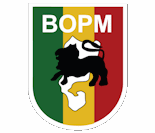 The Special Mountain Operations Brigade is assigned a very important region of the national territory, due to its geographical location with respect to the border with Mexico, covering its territorial extension from the Pacific beaches to the highest summits of Central America, as well as the departments of San Marcos, Quetzaltenango and Huehuetenango, an area rich in culture, in resources, created this brigade to combat organized crime and drug trafficking have disturbed peace in the region. The Mountain Operations Brigade is guided by the guidance given by the Army High Command through the driving guides and the Pact for Security, Justice and Peace, which leads to the identification of those needs And tasks to be carried out in a timely and effective manner in a coordinated manner within the Brigade, as well as support to other State institutions to achieve the mission and the well-being of men. Another important aspect of the Brigade's work is the projection to the population with participation in academic aspects such as seminars, conferences, talks, and cultural aspects. Military Zone No. 18 was founded according to Government Agreement 163-83 dated March 23, 1983; this Military Zone was deactivated in 2004, during the government of President Oscar Berger. On June 30, 2013 the Special Mountain Operations Brigade is inaugurated in compliance with the Peace and Justice Peace Pact, Third Strategy of the Axis of Democratic Security and Justice. The Special Mountain Operations Brigade is assigned a very important region of the national territory, due to its geographical location with respect to the border with Mexico, covering its territorial extension from the Pacific beaches to the highest summits of Central America, as well as the departments of San Marcos, Quetzaltenango and Huehuetenango, an area rich in culture, in resources, created this brigade to combat organized crime and drug trafficking have disturbed peace in the region. The Mountain Operations Brigade is guided by the guidance given by the Army High Command through the driving guides and the Pact for Security, Justice and Peace, which leads to the identification of those needs And tasks to be carried out in a timely and effective manner in a coordinated manner within the Brigade, as well as support to other State institutions to achieve the mission and the well-being of men. Another important aspect of the Brigade's work is the projection to the population with participation in academic aspects such as seminars, conferences, talks, and cultural aspects. Military Zone No. 18 was founded according to Government Agreement 163-83 dated March 23, 1983; this Military Zone was deactivated in 2004, during the government of President Oscar Berger. On June 30, 2013 the Special Mountain Operations Brigade is inaugurated in compliance with the Peace and Justice Peace Pact, Third Strategy of the Axis of Democratic Security and Justice.
|
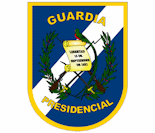 The Presidential Guard is a Special Military Command, with high efficiency and effectiveness, composed of Officers, Specialists and Troop fully identified with the principles of Valor, Loyalty and Sacrifice, with adequate mobility and modern technology, equipped, motivated and trained to guarantee the safety of the Lord President of the Republic, the Vice-President and their families. "The Guard dies but does not give up" TOHIL is a Fire, Sun and Rain God and patron god of the K'iche. Tohil was also associated with mountains and was a god of war, sacrifice and sustenance. The origins of the Presidential Guard go back to the colonial period, however, the institutionalization of this Special Military Command began on January 29, 1889 with the creation of the Guard of Honor that fulfilled this honorable mission until the founding of the Company of the Presidential Guard. The 13 of December of 1,948 by means of Presidential Decree published in the General Order of the Army No. 687 the then Constitutional President of the Republic Doctor Juan José Arévalo Bermejo creates the Company of the Presidential Guard with the mission to provide security to the President of The Republic and his family. Currently in the facilities of Fort San Rafael de Matamoros are located the Military Commands of: The Presidential Guard, Army Transport Corps, Military Geographic Service and the Logistic Support Command. The Presidential Guard is a Special Military Command, with high efficiency and effectiveness, composed of Officers, Specialists and Troop fully identified with the principles of Valor, Loyalty and Sacrifice, with adequate mobility and modern technology, equipped, motivated and trained to guarantee the safety of the Lord President of the Republic, the Vice-President and their families. "The Guard dies but does not give up" TOHIL is a Fire, Sun and Rain God and patron god of the K'iche. Tohil was also associated with mountains and was a god of war, sacrifice and sustenance. The origins of the Presidential Guard go back to the colonial period, however, the institutionalization of this Special Military Command began on January 29, 1889 with the creation of the Guard of Honor that fulfilled this honorable mission until the founding of the Company of the Presidential Guard. The 13 of December of 1,948 by means of Presidential Decree published in the General Order of the Army No. 687 the then Constitutional President of the Republic Doctor Juan José Arévalo Bermejo creates the Company of the Presidential Guard with the mission to provide security to the President of The Republic and his family. Currently in the facilities of Fort San Rafael de Matamoros are located the Military Commands of: The Presidential Guard, Army Transport Corps, Military Geographic Service and the Logistic Support Command.
The Presidential General Staff (Estado Mayor Presidencial) (EMP) was a military organization that served as a presidential military guard with the mission of protecting the President. Critics considered compliance with the 1996 peace accord recommendation to eilminate this unit as essential because of the EMP's direct involvement in past human rights violations and obstruction of justice, In addition to providing presidential security, the EMP had performed such functions as, intelligence gathering, planning and carrying out selective assassinations, and other illicit operations. President Alfonso Portillo accomplished its final elimination on 31 October 2003.
|
|
NEWSLETTER
|
|
Join the GlobalSecurity.org mailing list
|
|
|


 The First Infantry Brigade "General Luis García León" ["GLGL"] is the largest military command of the Republic. The main function is to maintain the sovereignty of the country. The First Infantry Brigade "GLGL", will conduct defensive operations to order and comprehensive cooperation; From "D" day to "H" hours, in the areas of interest in the responsibility sector, with the purpose of guaranteeing the areas of Collective, National, Public, Citizen, external and internal Security and contributing to the maintenance of the Defense of national sovereignty, the preservation of the Maya Biosphere Reserve, in order to contribute to the achievement of the institutional objectives of the Guatemalan Army.
Since the jurisdictional area of this brigade is bounded by the northern part, the country of Mexico and the west to the territory administered by Belize. But we also contribute to safety within the nine municipalities that make up the area of responsibility. As part of inter-agency activities, the First Infantry Brigade "General Luis García León" supports governmental and non-governmental entities involved in the conservation of natural, cultural, security, environment, disaster prevention and control, humanitarian aid, as well as the sustainable development of the department of Petén. Activities are carried out involving the entire population including justice, educational, religious, human rights, municipalities, parents, but mainly to children. In accordance with item 20 of the General Army Order for Officers No. 09-2004, dated July 31, 2004, the High Command ordered the cancellation of the name of the Second Military Region "General Luis" García León, for the First Infantry Brigade "General Luis García León", due to the Modernization and Restructuring Plan.
The First Infantry Brigade "General Luis García León" ["GLGL"] is the largest military command of the Republic. The main function is to maintain the sovereignty of the country. The First Infantry Brigade "GLGL", will conduct defensive operations to order and comprehensive cooperation; From "D" day to "H" hours, in the areas of interest in the responsibility sector, with the purpose of guaranteeing the areas of Collective, National, Public, Citizen, external and internal Security and contributing to the maintenance of the Defense of national sovereignty, the preservation of the Maya Biosphere Reserve, in order to contribute to the achievement of the institutional objectives of the Guatemalan Army.
Since the jurisdictional area of this brigade is bounded by the northern part, the country of Mexico and the west to the territory administered by Belize. But we also contribute to safety within the nine municipalities that make up the area of responsibility. As part of inter-agency activities, the First Infantry Brigade "General Luis García León" supports governmental and non-governmental entities involved in the conservation of natural, cultural, security, environment, disaster prevention and control, humanitarian aid, as well as the sustainable development of the department of Petén. Activities are carried out involving the entire population including justice, educational, religious, human rights, municipalities, parents, but mainly to children. In accordance with item 20 of the General Army Order for Officers No. 09-2004, dated July 31, 2004, the High Command ordered the cancellation of the name of the Second Military Region "General Luis" García León, for the First Infantry Brigade "General Luis García León", due to the Modernization and Restructuring Plan.
 The Second Infantry Brigade "Captain General Rafael Carrera" sectors of responsibility are the Departments of Zacapa, El Progreso, Chiquimula, and Izabal; Likewise, of thirty-five Municipalities and maintain a close relationship with governmental and non-governmental authorities. The Second Infantry Brigade, "Captain General Rafael Carrera", Zacapa, will conduct military and non-war operations from day "D" at time "H" in support of the constitutional mission of the Guatemalan Army, based on Articles 244 And 249, developing an efficient defense, institutional cooperation, administration, professionalization and projection in its area of responsibility, and at the order of the National Defense Staff in any part of the Republic. The history of this Brigade has a legendary aspect, its origins go back to the garrison of plaza that existed until 30 June 1945, in the place that occupied formerly the Institute Adolfo Venancio Hall of the East, in front of the central park of this city. The name was given in memory of General Jose Rafael Carrera Turcios, strategist victor of the battle of San José de La Arada, carried out February 2, 1951, stopping the advance of the army Unionist of Honduras and El Salvador.
The Second Infantry Brigade "Captain General Rafael Carrera" sectors of responsibility are the Departments of Zacapa, El Progreso, Chiquimula, and Izabal; Likewise, of thirty-five Municipalities and maintain a close relationship with governmental and non-governmental authorities. The Second Infantry Brigade, "Captain General Rafael Carrera", Zacapa, will conduct military and non-war operations from day "D" at time "H" in support of the constitutional mission of the Guatemalan Army, based on Articles 244 And 249, developing an efficient defense, institutional cooperation, administration, professionalization and projection in its area of responsibility, and at the order of the National Defense Staff in any part of the Republic. The history of this Brigade has a legendary aspect, its origins go back to the garrison of plaza that existed until 30 June 1945, in the place that occupied formerly the Institute Adolfo Venancio Hall of the East, in front of the central park of this city. The name was given in memory of General Jose Rafael Carrera Turcios, strategist victor of the battle of San José de La Arada, carried out February 2, 1951, stopping the advance of the army Unionist of Honduras and El Salvador.
 Third Brigade of Infantry "General Manuel Aguilar Santamaría" has under its operational jurisdiction three (3) Departments of the east of the country (Jutiapa , Jalapa and Santa Rosa), two hundred three (203) kilometers of border with El Salvador and fifty-four (54) kilometers on the coast of the Pacific Ocean. The Third Infantry Brigade will conduct security operations and control of the border line, military and non-war operations, from the "D" day to the "H" hour, to create the conditions that allow development, guarantee the welfare Of inhabitants and the preservation of existing resources in the area of operational responsibility and to be in a position to support other Infantry Brigades to order, all to help maintain the independence, sovereignty and honor of Guatemala, the integrity of the Territory, peace and internal and external security. The Third Infantry Brigade with its Infantry Battalion participated in the combat to the subversion from its beginning in all the areas of the country, managing to maintain the fight until the signing of the agreements of Peace that were realized 29 December 1996. In 1906, General Aguilar Santa María was appointed General-in-Chief of the Guatemalan Army. General Aguilar Santa Maria wrote a detailed report of the military mistakes made, so he was placed under house arrest and humiliated constantly by the ruler; The situation became unbearable for this nobleman, who according to the official report was deprived of life in his house of room, where he was discovered on March 19, 1908.
Third Brigade of Infantry "General Manuel Aguilar Santamaría" has under its operational jurisdiction three (3) Departments of the east of the country (Jutiapa , Jalapa and Santa Rosa), two hundred three (203) kilometers of border with El Salvador and fifty-four (54) kilometers on the coast of the Pacific Ocean. The Third Infantry Brigade will conduct security operations and control of the border line, military and non-war operations, from the "D" day to the "H" hour, to create the conditions that allow development, guarantee the welfare Of inhabitants and the preservation of existing resources in the area of operational responsibility and to be in a position to support other Infantry Brigades to order, all to help maintain the independence, sovereignty and honor of Guatemala, the integrity of the Territory, peace and internal and external security. The Third Infantry Brigade with its Infantry Battalion participated in the combat to the subversion from its beginning in all the areas of the country, managing to maintain the fight until the signing of the agreements of Peace that were realized 29 December 1996. In 1906, General Aguilar Santa María was appointed General-in-Chief of the Guatemalan Army. General Aguilar Santa Maria wrote a detailed report of the military mistakes made, so he was placed under house arrest and humiliated constantly by the ruler; The situation became unbearable for this nobleman, who according to the official report was deprived of life in his house of room, where he was discovered on March 19, 1908.
 The Fourth Infantry Brigade "General Justo Rufino Barrios" is located in the municipality of Cuyotenango, in the department of Suchitepéquez, the home of Xancatales soldiers. The Fourth Infantry Brigade will carry out military and non-war operations to help create security conditions that facilitate the development and progress of the region in order to maintain independence, sovereignty and territorial integrity, peace and the honor of Guatemala. Its organic units, which were initially created in 1986 are: Command and Staff Company, Service Support Company, the First Infantry Battalion composed of the 1st, 2nd. And 3rd. Company of Fusiliers and a Company of Heavy Weapons. In the same year was organized the Battery of Obuses cal. 105mm. And in the year of 1987, 01 Support Squad of Services for the First Infantry Battalion and Civil Affairs Company. Having been created, the Second Infantry Battalion (-) composed of the 1st, 2nd. Company of Fusiliers and a Company of Heavy Weapons, coming from the former Military Zone No. 18, San Marcos.
The Fourth Infantry Brigade "General Justo Rufino Barrios" is located in the municipality of Cuyotenango, in the department of Suchitepéquez, the home of Xancatales soldiers. The Fourth Infantry Brigade will carry out military and non-war operations to help create security conditions that facilitate the development and progress of the region in order to maintain independence, sovereignty and territorial integrity, peace and the honor of Guatemala. Its organic units, which were initially created in 1986 are: Command and Staff Company, Service Support Company, the First Infantry Battalion composed of the 1st, 2nd. And 3rd. Company of Fusiliers and a Company of Heavy Weapons. In the same year was organized the Battery of Obuses cal. 105mm. And in the year of 1987, 01 Support Squad of Services for the First Infantry Battalion and Civil Affairs Company. Having been created, the Second Infantry Battalion (-) composed of the 1st, 2nd. Company of Fusiliers and a Company of Heavy Weapons, coming from the former Military Zone No. 18, San Marcos.
 The the Fifth Infantry Brigade "Mariscal Gregorio Solares" is based in the department of Huehuetenango. The Fifth Infantry Brigade "MGS" made up of soldiers trained in the execution of military operations, humanitarian aid operations, search and rescue and operations of integral cooperation with other State institutions, privileging the observance of Human Rights and International human right. At the same time, training allows the development of operations in the areas of national security, citizen security and public safety, through tactical operations to safeguard the sovereignty and maintenance of security and peace for Guatemalan citizens. The Operational Responsibility Area assigned to the Fifth Infantry Brigade "MGS", Is a region of the national territory very important by virtue of its geographical location, which includes a border strip with the United Mexican States. It also houses the departments of Huehuetenango, Quiché, Sololá and Totonicapán. The Fifth Infantry Brigade is named after the distinguished Mariscal Gregorio Solares, Who stood out for his courage in the battle of the Plow in which he fought alongside General Rafael Carrera and for his meritorious intervention in it, receives the Medal of Honor to Merit and Special in Arms.
The the Fifth Infantry Brigade "Mariscal Gregorio Solares" is based in the department of Huehuetenango. The Fifth Infantry Brigade "MGS" made up of soldiers trained in the execution of military operations, humanitarian aid operations, search and rescue and operations of integral cooperation with other State institutions, privileging the observance of Human Rights and International human right. At the same time, training allows the development of operations in the areas of national security, citizen security and public safety, through tactical operations to safeguard the sovereignty and maintenance of security and peace for Guatemalan citizens. The Operational Responsibility Area assigned to the Fifth Infantry Brigade "MGS", Is a region of the national territory very important by virtue of its geographical location, which includes a border strip with the United Mexican States. It also houses the departments of Huehuetenango, Quiché, Sololá and Totonicapán. The Fifth Infantry Brigade is named after the distinguished Mariscal Gregorio Solares, Who stood out for his courage in the battle of the Plow in which he fought alongside General Rafael Carrera and for his meritorious intervention in it, receives the Medal of Honor to Merit and Special in Arms.
 The Sixth Infantry Brigade "CAJDI" [Colonel "Antonio José de Irisarri], is located in the northwestern part of the Guatemalan territory, under the responsibility of the department of Alta Verapaz and the municipality of Ixcán, Quiché. The main mission of this infantry brigade is to conduct military and non-war operations, with the purpose of contributing to the maintenance of independence, sovereignty, territorial integrity, peace and internal and external security, with special participation in all four areas of security; A deployment fully compatible with collective and national security covering the seventy-two kilometers of border region with Mexico; The execution of operations at critical points and strategic value in the area of responsibility with an impact on public security and actions to protect people and their property with a clear coverage in citizen security; As well as others ordered by the National Defense Staff, in any part of the Republic. The Sixth Infantry Brigade "Coronel Antonio José de Irisarri", was founded according to Government Agreement No.301-2009 considering the purpose of strengthening peace and security.
The Sixth Infantry Brigade "CAJDI" [Colonel "Antonio José de Irisarri], is located in the northwestern part of the Guatemalan territory, under the responsibility of the department of Alta Verapaz and the municipality of Ixcán, Quiché. The main mission of this infantry brigade is to conduct military and non-war operations, with the purpose of contributing to the maintenance of independence, sovereignty, territorial integrity, peace and internal and external security, with special participation in all four areas of security; A deployment fully compatible with collective and national security covering the seventy-two kilometers of border region with Mexico; The execution of operations at critical points and strategic value in the area of responsibility with an impact on public security and actions to protect people and their property with a clear coverage in citizen security; As well as others ordered by the National Defense Staff, in any part of the Republic. The Sixth Infantry Brigade "Coronel Antonio José de Irisarri", was founded according to Government Agreement No.301-2009 considering the purpose of strengthening peace and security.
 The 1st. Infantry Brigade "Mariscal Zavala" was created on May 25, 1846, at the time of the government of General Rafael Carrera, founder of the Republic of Guatemala. In its beginnings it was located in the hill of San José de Buena Vista, area that at the moment occupies the national theater "Miguel Angel Asturias" In the current Zone 4 of the capital city. The First Brigade of Infantry Mariscal Zavala, within the current context of the Guatemalan Army, fulfills strategic missions, not only because of its characteristics of special military organization, but also because of its geographical location in a natural environment. The limits of its military jurisdiction include the departments of Guatemala and Escuintla, which are under jurisdiction the municipalities of the central zone being Palencia, San Jose del Golfo, San Pedro Ayampuc and Chinautla. In the area of support with the Penitentiary System, In addition, it is periodically constituted as a point of concentration, both for the organization and training of the contingents prior to deployment, as well as when returning from their mission areas
The 1st. Infantry Brigade "Mariscal Zavala" was created on May 25, 1846, at the time of the government of General Rafael Carrera, founder of the Republic of Guatemala. In its beginnings it was located in the hill of San José de Buena Vista, area that at the moment occupies the national theater "Miguel Angel Asturias" In the current Zone 4 of the capital city. The First Brigade of Infantry Mariscal Zavala, within the current context of the Guatemalan Army, fulfills strategic missions, not only because of its characteristics of special military organization, but also because of its geographical location in a natural environment. The limits of its military jurisdiction include the departments of Guatemala and Escuintla, which are under jurisdiction the municipalities of the central zone being Palencia, San Jose del Golfo, San Pedro Ayampuc and Chinautla. In the area of support with the Penitentiary System, In addition, it is periodically constituted as a point of concentration, both for the organization and training of the contingents prior to deployment, as well as when returning from their mission areas
 The Special Jungle Operations Brigade "Lt. Colonel Infantry DEM Víctor Augusto Quilo Ayuso" covers the vast territory of the Petén, has an extensive border area, natural resources, strategic and archaeological sites considered cultural heritage of humanity, requiring specific attention. For this reason, the President of the Republic decided to create a special unit by means of Government Agreement No. 63-2012, dated June 30, 2012. It conducts non-war operations, starting on 30JUN2012, in the western department of Peten, in order to control threats, land and river routes, achieve and maintain security conditions conducive to the full development of the citizen. It is a special brigade of forest operations, with immediate air response capacity, to defend sovereignty in the area of responsibility for threats, by interdicting illegal activities developed by common crime and organized crime, as well as helping to efficiently protect the Mayan biosphere west of Petén department. With differentiated capacities for the assistance to the population of the damages caused by natural or anthropogenic disasters. The special status of this area of the Petén department, "Cradle of the Maya Civilization", where important natural resources of a strategic nature are located, protected areas such as "Laguna del Tigre" National Park and "Sierra Lacandón". Carry out a strategic redeployment of personnel to contribute to its conservation. The Special Brigade of Operations of Forest, had its origins as Inter-institutional Force of the North, created the 06SEP2005, according to the Fragmentary Order No. 3 "H" -0014/2005, to the Plan of Operations against the Delinquency "Safe Guatemala" No With the mission of carrying out non-war operations in support of the National Civil Police and other State Institutions in order to neutralize the illicit activities that affect the department of the Peten, contributing to peace, security And development of the country. This Brigade has an area of responsibility that has a territorial extension of 20,167.82 kms ², that groups to the municipalities of San Andrés, San Francisco, La Libertad, Crosses and Sayaxché having its soothes in the village the Subín, of the municipality of the Freedom.
The Special Jungle Operations Brigade "Lt. Colonel Infantry DEM Víctor Augusto Quilo Ayuso" covers the vast territory of the Petén, has an extensive border area, natural resources, strategic and archaeological sites considered cultural heritage of humanity, requiring specific attention. For this reason, the President of the Republic decided to create a special unit by means of Government Agreement No. 63-2012, dated June 30, 2012. It conducts non-war operations, starting on 30JUN2012, in the western department of Peten, in order to control threats, land and river routes, achieve and maintain security conditions conducive to the full development of the citizen. It is a special brigade of forest operations, with immediate air response capacity, to defend sovereignty in the area of responsibility for threats, by interdicting illegal activities developed by common crime and organized crime, as well as helping to efficiently protect the Mayan biosphere west of Petén department. With differentiated capacities for the assistance to the population of the damages caused by natural or anthropogenic disasters. The special status of this area of the Petén department, "Cradle of the Maya Civilization", where important natural resources of a strategic nature are located, protected areas such as "Laguna del Tigre" National Park and "Sierra Lacandón". Carry out a strategic redeployment of personnel to contribute to its conservation. The Special Brigade of Operations of Forest, had its origins as Inter-institutional Force of the North, created the 06SEP2005, according to the Fragmentary Order No. 3 "H" -0014/2005, to the Plan of Operations against the Delinquency "Safe Guatemala" No With the mission of carrying out non-war operations in support of the National Civil Police and other State Institutions in order to neutralize the illicit activities that affect the department of the Peten, contributing to peace, security And development of the country. This Brigade has an area of responsibility that has a territorial extension of 20,167.82 kms ², that groups to the municipalities of San Andrés, San Francisco, La Libertad, Crosses and Sayaxché having its soothes in the village the Subín, of the municipality of the Freedom.
 The Parachute Brigade "General Felipe Cruz" have in mind that the threats, risks and other concerns that face the security and defense of the nation are latent and therefore the constant training in parachute soldiers is efficient, To be ready to fulfill the missions entrusted by the Guatemalan Army, bearing in mind the respect for Human Rights and the faithful compliance with the rules, international treaties and laws in force in the country. In the area of action, the Parachute Brigade as a Strategic Unit of the Guatemalan Army, is not only limited to the national level, but also part of the international effort through a contingent of Special Forces under United Nations mandate in The Democratic Republic of the Congo on the African continent, this as a national contribution to contribute to the pacification efforts of the conflict areas in the world.
The Parachute Brigade "General Felipe Cruz" have in mind that the threats, risks and other concerns that face the security and defense of the nation are latent and therefore the constant training in parachute soldiers is efficient, To be ready to fulfill the missions entrusted by the Guatemalan Army, bearing in mind the respect for Human Rights and the faithful compliance with the rules, international treaties and laws in force in the country. In the area of action, the Parachute Brigade as a Strategic Unit of the Guatemalan Army, is not only limited to the national level, but also part of the international effort through a contingent of Special Forces under United Nations mandate in The Democratic Republic of the Congo on the African continent, this as a national contribution to contribute to the pacification efforts of the conflict areas in the world.
 Special Forces Brigade [Brigada de Fuerzas Especiales "Kaibil"] mission is to carry out special operations aimed at the achievement of tactical objectives of strategic value for short periods; Participate in peace operations within the framework of the UN; And, to develop support operations for the State's civil security forces throughout the national territory; And to train special military units and contribute to the training of regular units. The story of the great Warrior Prince Kaibil Balam, in the tactical scenario of the war in the time of the conquest, inspires this unit and marking the way forward, for which we have the commitment to integrate the Elite Unit of the Glorious Army of Guatemala. The Guatemalan Army developed into the most effective counterinsurgency machine in the region. On September 20, 1974, the then Major of Infantry Pablo Nuila Hub, presented to the Chief of the Second Section of the General Staff of the Army Coronel de Infantería DEM. Ovidio Morales, a study in which proposed the creation of a course of "Commands". Special Operations were run by two groups of highly trained commandos; know as “KAIBILES.” There were also two Parachute Battalions, which were employed as light infantry. For urban warfare and rural policing, there was a semi-independent Mobile Military Police Corps, with two MPA battalions. The Air Force organized a Special Security Group for protection and immediate response, while the Navy deployed Naval Infantry Battalions known as “CAIMANES.” In accordance with the Plan for Modernization and Restructuring of the Army, The First and Second Kaibiles Fusiliers Company and the Special Forces Battalion formed by the First and Second Special Forces Companies, the Anti-Terrorist Unit currently forms the Special Interdiction and Rescue Group (GEIR) and the Company of Support and Services. The Brigade, in turn, houses the School of Training and Special Operations "Kaibil" and the Sniper School.
Special Forces Brigade [Brigada de Fuerzas Especiales "Kaibil"] mission is to carry out special operations aimed at the achievement of tactical objectives of strategic value for short periods; Participate in peace operations within the framework of the UN; And, to develop support operations for the State's civil security forces throughout the national territory; And to train special military units and contribute to the training of regular units. The story of the great Warrior Prince Kaibil Balam, in the tactical scenario of the war in the time of the conquest, inspires this unit and marking the way forward, for which we have the commitment to integrate the Elite Unit of the Glorious Army of Guatemala. The Guatemalan Army developed into the most effective counterinsurgency machine in the region. On September 20, 1974, the then Major of Infantry Pablo Nuila Hub, presented to the Chief of the Second Section of the General Staff of the Army Coronel de Infantería DEM. Ovidio Morales, a study in which proposed the creation of a course of "Commands". Special Operations were run by two groups of highly trained commandos; know as “KAIBILES.” There were also two Parachute Battalions, which were employed as light infantry. For urban warfare and rural policing, there was a semi-independent Mobile Military Police Corps, with two MPA battalions. The Air Force organized a Special Security Group for protection and immediate response, while the Navy deployed Naval Infantry Battalions known as “CAIMANES.” In accordance with the Plan for Modernization and Restructuring of the Army, The First and Second Kaibiles Fusiliers Company and the Special Forces Battalion formed by the First and Second Special Forces Companies, the Anti-Terrorist Unit currently forms the Special Interdiction and Rescue Group (GEIR) and the Company of Support and Services. The Brigade, in turn, houses the School of Training and Special Operations "Kaibil" and the Sniper School.  The Special Mountain Operations Brigade is assigned a very important region of the national territory, due to its geographical location with respect to the border with Mexico, covering its territorial extension from the Pacific beaches to the highest summits of Central America, as well as the departments of San Marcos, Quetzaltenango and Huehuetenango, an area rich in culture, in resources, created this brigade to combat organized crime and drug trafficking have disturbed peace in the region. The Mountain Operations Brigade is guided by the guidance given by the Army High Command through the driving guides and the Pact for Security, Justice and Peace, which leads to the identification of those needs And tasks to be carried out in a timely and effective manner in a coordinated manner within the Brigade, as well as support to other State institutions to achieve the mission and the well-being of men. Another important aspect of the Brigade's work is the projection to the population with participation in academic aspects such as seminars, conferences, talks, and cultural aspects. Military Zone No. 18 was founded according to Government Agreement 163-83 dated March 23, 1983; this Military Zone was deactivated in 2004, during the government of President Oscar Berger. On June 30, 2013 the Special Mountain Operations Brigade is inaugurated in compliance with the Peace and Justice Peace Pact, Third Strategy of the Axis of Democratic Security and Justice.
The Special Mountain Operations Brigade is assigned a very important region of the national territory, due to its geographical location with respect to the border with Mexico, covering its territorial extension from the Pacific beaches to the highest summits of Central America, as well as the departments of San Marcos, Quetzaltenango and Huehuetenango, an area rich in culture, in resources, created this brigade to combat organized crime and drug trafficking have disturbed peace in the region. The Mountain Operations Brigade is guided by the guidance given by the Army High Command through the driving guides and the Pact for Security, Justice and Peace, which leads to the identification of those needs And tasks to be carried out in a timely and effective manner in a coordinated manner within the Brigade, as well as support to other State institutions to achieve the mission and the well-being of men. Another important aspect of the Brigade's work is the projection to the population with participation in academic aspects such as seminars, conferences, talks, and cultural aspects. Military Zone No. 18 was founded according to Government Agreement 163-83 dated March 23, 1983; this Military Zone was deactivated in 2004, during the government of President Oscar Berger. On June 30, 2013 the Special Mountain Operations Brigade is inaugurated in compliance with the Peace and Justice Peace Pact, Third Strategy of the Axis of Democratic Security and Justice.
 The Presidential Guard is a Special Military Command, with high efficiency and effectiveness, composed of Officers, Specialists and Troop fully identified with the principles of Valor, Loyalty and Sacrifice, with adequate mobility and modern technology, equipped, motivated and trained to guarantee the safety of the Lord President of the Republic, the Vice-President and their families. "The Guard dies but does not give up" TOHIL is a Fire, Sun and Rain God and patron god of the K'iche. Tohil was also associated with mountains and was a god of war, sacrifice and sustenance. The origins of the Presidential Guard go back to the colonial period, however, the institutionalization of this Special Military Command began on January 29, 1889 with the creation of the Guard of Honor that fulfilled this honorable mission until the founding of the Company of the Presidential Guard. The 13 of December of 1,948 by means of Presidential Decree published in the General Order of the Army No. 687 the then Constitutional President of the Republic Doctor Juan José Arévalo Bermejo creates the Company of the Presidential Guard with the mission to provide security to the President of The Republic and his family. Currently in the facilities of Fort San Rafael de Matamoros are located the Military Commands of: The Presidential Guard, Army Transport Corps, Military Geographic Service and the Logistic Support Command.
The Presidential Guard is a Special Military Command, with high efficiency and effectiveness, composed of Officers, Specialists and Troop fully identified with the principles of Valor, Loyalty and Sacrifice, with adequate mobility and modern technology, equipped, motivated and trained to guarantee the safety of the Lord President of the Republic, the Vice-President and their families. "The Guard dies but does not give up" TOHIL is a Fire, Sun and Rain God and patron god of the K'iche. Tohil was also associated with mountains and was a god of war, sacrifice and sustenance. The origins of the Presidential Guard go back to the colonial period, however, the institutionalization of this Special Military Command began on January 29, 1889 with the creation of the Guard of Honor that fulfilled this honorable mission until the founding of the Company of the Presidential Guard. The 13 of December of 1,948 by means of Presidential Decree published in the General Order of the Army No. 687 the then Constitutional President of the Republic Doctor Juan José Arévalo Bermejo creates the Company of the Presidential Guard with the mission to provide security to the President of The Republic and his family. Currently in the facilities of Fort San Rafael de Matamoros are located the Military Commands of: The Presidential Guard, Army Transport Corps, Military Geographic Service and the Logistic Support Command.